Real Changers
Community Partners for the "Real Change Movement" speak about the project.
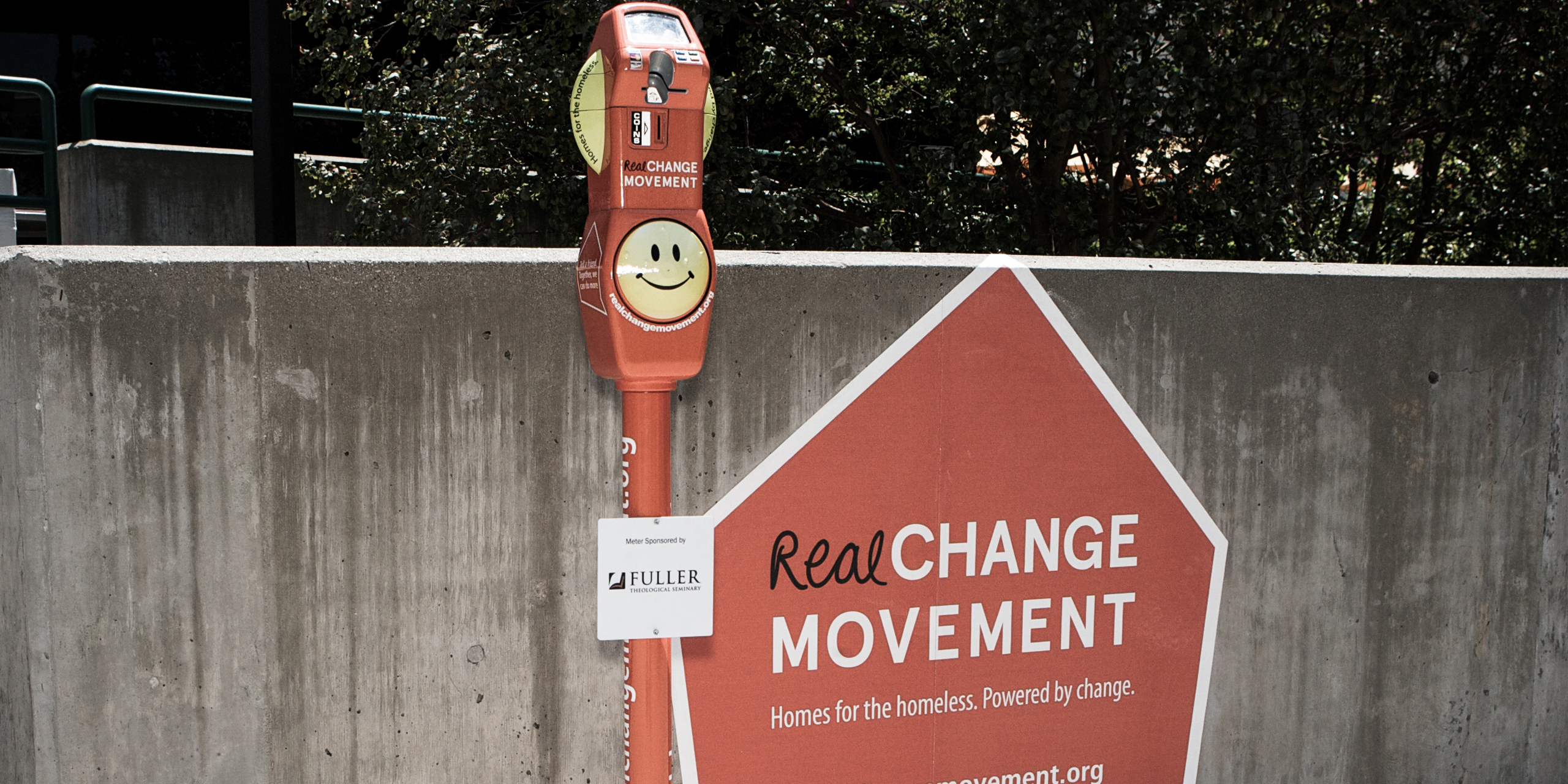
Fall 2013
Students in the Fall 2013 Real Change Movement studio, addressed homelessness in Pasadena by designing a transmedia, public awareness campaign in conjunction with City of Pasadena leaders. By activating public support for tangible, self-sustaining housing solutions for Pasadena’s homeless communities, the students in the class aimed to create an actionable campaign for real change. The Real Change Movement studio is a continuation of the Fall 2012, Change on the Street studio in which Art Center students sought ways to harness the community’s compassion into long-term design solutions to end homelessness, and mitigate panhandling.
RECENT PROJECT DEVELOPMENTS:
In February of 2018, the Real Change Movement expanded to the Downtown Los Angeles area, with meters installed in Grand Park.
The Real Change Movement campaign has expanded to West Palm Beach, Florida with 10 Meters installed in the downtown area, March of 2016.
According to the City of Pasadena Dept. of Housing, in 2014-2015 the meters raised $4,000 in public donations with the United Way of Greater LA providing a dollar for dollar match that doubled all donations made to the meters totaling $8,000, and helped place 20 homeless individuals off the streets and into permanent housing.
Pasadena Mayor Bill Boggard and other community leaders unveiled the first operational Real Change Movement parking meter on August 13, 2014 outside theFuller Theological Seminary School. Officials hope to have a dozen meters up and running throughout the city in the coming months at heavily trafficked locations such as the convention center, shopping malls and parking structures. Fuller Seminary President Mark Labberton joined the Mayor at the launch event, noting that the meter will serve as a visible reminder as we “unveil a new season in the life of Pasadena’s homeless,” bringing new homes for both the community of Pasadena and the individuals whose lives will be affected by this. Visit the Real Change Movement website to learn more about the campaign or to donate now.
There are ‘real changers’ in Pasadena already. Nonprofits and homeless service providers, the city—but they need more people, more businesses and more individuals to be a part of this to end homelessness in Pasadena. This project is a step in creating that.
– William Huang, Director of Housing, City of Pasadena
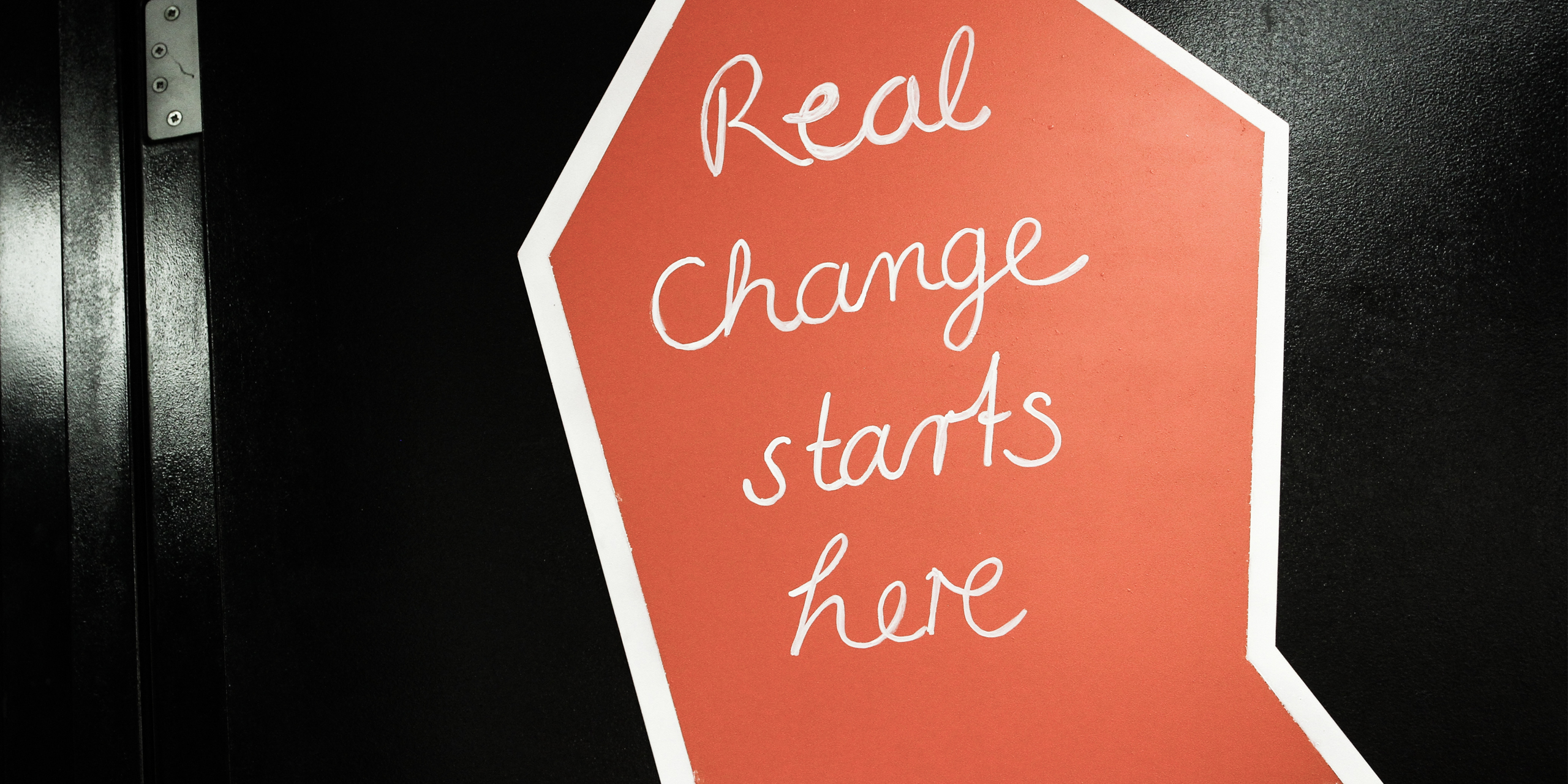
Los Angeles County is the homeless capital of the U.S. Over the last two years, there has been a 16% increase in this problem with an estimated 55,000 homeless on any given night. In Pasadena, however, the numbers have gone down 38 % in the past two years. Though Pasadena is small, only 23 square miles, it still has 772 homeless who congregate in several main locations: in the Old Pasadena area, and in the south, along Memorial Park and Central Park along the Gold Line. The more service resistant homeless gather in East Pasadena.
The City of Pasadena is engaging in an ongoing parking meter education campaign with the intention of helping to end homelessness in Pasadena. Its three-pronged approach is comprised of: a public outreach and education campaign, the installation of re-purposed parking meters, “donation stations” (citywide), allowing interested people to contribute their spare change and/or credit card donations in productive ways, and thirdly, the redirecting of funds from panhandlers to homeless service providers and job training programs. Informing the public that not all panhandlers are homeless, and not all homeless are panhandlers, is key. Educating them further with regard to the basic services available, for instance, hot meals 365 days a year, access to showers as well as shelters, is also a critical component.
The City of Pasadena, the Business Area Improvement Districts and non-profit organizations have joined together with the goal of raising awareness of the homeless in Pasadena, and changing the behavior of how donors give to people experiencing homelessness. Achieving this goal means that money can be more targeted and effective, long-term solutions can be reached.
The overarching goal is to create a self-sustaining program that will provide funding for existing homeless services, which will exist in perpetuity. Achieving this goal is one step in the goal of ending homelessness in Pasadena.
This campaign is a psychological study. Where are these people, what are they doing, can we interest them in what we are doing, can we do it incrementally so they don’t feel pushed, don’t feel that we’re saying, ‘do this, don’t do this.
– Guillaume Wolf, Faculty, Graphic Design
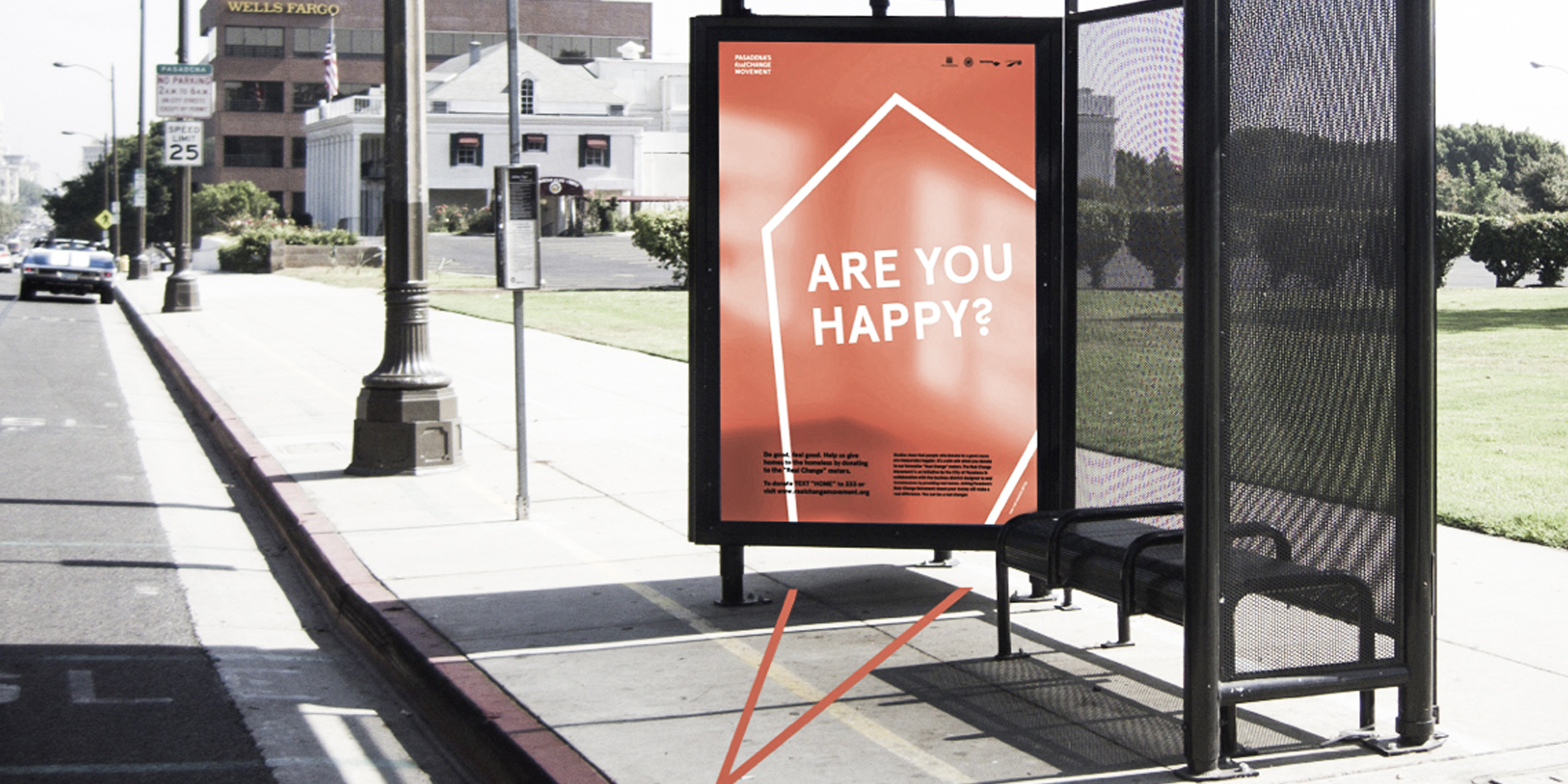
The Real Change Movement studio aimed to bring awareness to a new initiative: The Real Change Movement. At its core, the movement is about making a real difference in the lives of Pasadena’s homeless population. It accomplishes this by allowing people to give money to a dedicated meter, rather than to the homeless, directly. By contributing to these change meters, change is created, because the money from the meters is going toward actual homes for the homeless.
Looking at everything as possible, starting with concept first, and then understanding that the technical details can be worked out—this is what enables us to work together and do so much in a short amount of time.”
– Yetao Long, Student, Photography
The early weeks of the class, 1-3, were devoted to research and discussion regarding the beliefs and behaviors of shoppers and donators. Central questions were considered, like: “How do we change people’s minds?” “How do people give?” and “How do we move a ‘shopping person’ to a ‘giving person’?” Concurrently, the students were looking at their own ideas and beliefs, around ideas of: People want to be happier. How do we make them happier? Early weeks were also focused on the mentality of shoppers. The class reflected on, and analyzed, the ideas of what makes me stop, what makes me want to go deeper? From there they broadened the question to: what makes someone else stop, and what makes someone else want to go deeper?
As the class moved further into the term, concrete ideas and concepts were raised, developed and considered. At this point the class decided to vote, via secret ballot, to determine which ideas would move forward. Various elements were voted upon: the idea-concept-approach, the name and the visual look of the campaign. The shape of the house, which was ultimately used by the group, came from an early concept, but was then applied to the group’s “Do Good Feel Good” campaign concept.
 During Week 4, the class gave an interim presentation to stakeholders, thus allowing the group to hear feedback and gain insights. They used the following weeks to address, refine and hone their concept based upon the stakeholders’ needs and thoughts. This allowed them to move toward the midterm presentation with an approach that reinforced three crucial points in the campaign:
During Week 4, the class gave an interim presentation to stakeholders, thus allowing the group to hear feedback and gain insights. They used the following weeks to address, refine and hone their concept based upon the stakeholders’ needs and thoughts. This allowed them to move toward the midterm presentation with an approach that reinforced three crucial points in the campaign:
One challenge facing the class, that they needed to address in order for the campaign to succeed, was that when people are in a shopping mind-set, they are preoccupied with themselves. This is the opposite mind-set that’s needed to get people to give—generally, and to give—specifically, to help the homeless: the goal of the Real Change Movement.
Because this class was a real campaign and I’m a young advertiser, I learned so much about the important pieces for a campaign, especially about approaching people with a message, keeping things consistent all the way through, and understanding the psychology of a campaign.
– Liz Levin, Student, Advertising
Week 8. Mid-term presentation: The class unveiled a campaign that addressed the psychology of shopping and giving, and the knowledge of their Pasadena target demographic:
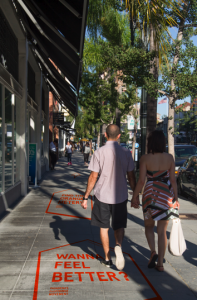 Decisions in each campaign element reflected the target groups, and their shopping/donating behavior. Starting with the name: “The Real Change Movement.” By calling it a “movement,” it implied that everyone is involved, engaged and playing an active role. Going further, the class gave the people involved a name, calling them “real changers.” The psychology behind this is that people like being a part of something, and when they are, they like to talk about it. This increased awareness and created greater visibility for the Real Change Movement, a critical part of the project’s social media component.
Decisions in each campaign element reflected the target groups, and their shopping/donating behavior. Starting with the name: “The Real Change Movement.” By calling it a “movement,” it implied that everyone is involved, engaged and playing an active role. Going further, the class gave the people involved a name, calling them “real changers.” The psychology behind this is that people like being a part of something, and when they are, they like to talk about it. This increased awareness and created greater visibility for the Real Change Movement, a critical part of the project’s social media component.
Re-purposed street meters became donation meters, and street signage with engaging verbiage drew people in, while also directing them toward the donation meters. Posters on bus shelters ran up and off the side, going “outside of the box” to create interest. City bus’ sides had graphics that read, ”You can be a real changer.” The bus’ backs had texting information and the Real Change Movement logo, which was designed in the shape of a house and contains the handwritten word “real” inside. This reflected research, done by the class, that real handwriting adds legitimacy.
Graphic design contributed to the overall campaign psychology; the class opted to dothe opposite of what was expected: a black and white campaign. Using only bright colors, the class created a campaign that could pass for a hip fashion brand. This was based on the idea that people in Pasadena look for the latest trend, at what’s exciting, and what is cool. The campaign, with its bold, vibrant visuals, is one the class felt people would look at, and pay attention to.
A social media campaign designed to get people aware and engaged utilized Facebook, Twitter, Instagram and Hashtags: #realchanger. Social media was also intended to drive people to the one-page website, where viewers would scroll down and find information and hotlinks. The website psychology was to hit the public with an interesting question immediately: Are You Happy? Scrolling down the viewer would go to a deeper level of understanding of their own giving behavior, as well as specific information: where donation meters are, how to donate on line, share, and learn more. A lighthearted motion piece for the website “Do good, feel good,” highlighted putting coins to good use.
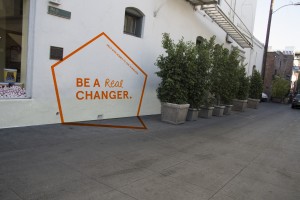 Moving forward, the class would be addressing the stakeholders’ question regarding a second layer of robust messaging around panhandling in the website “catch all” area. A strategy will be created to putting the message positively, as a micro-message of the campaign connecting with recorded Success Stories. These powerful stories clearly relay the message that the city of Pasadena is trying to end homelessness.
Moving forward, the class would be addressing the stakeholders’ question regarding a second layer of robust messaging around panhandling in the website “catch all” area. A strategy will be created to putting the message positively, as a micro-message of the campaign connecting with recorded Success Stories. These powerful stories clearly relay the message that the city of Pasadena is trying to end homelessness.
The issue of the need for the campaign to be transparent was discussed. Today, donors want to know where every penny donated goes. There was a push for the class to quantify the giving, and create an understanding of where money is going, and how that connects with human change. Addressing this meant the class would integrate facts and statistics into their final presentation.
My hope coming in was to create a movement that encompasses not just individuals, but also different groups coming together to help end homelessness. It was a hope that was met by the students.
– Amy Nguyen, Saeshe
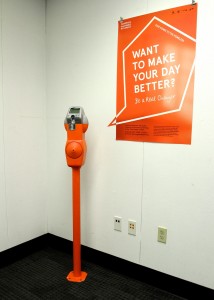 All design decisions the class made were based on research regarding two vital elements of a successful campaign: repetition and consistency. Added to that was their view that engaging the public would be best achieved with a highly positive message, which they wove into each of the individual pieces of The Real Change Movement, which all begins with the logo.
All design decisions the class made were based on research regarding two vital elements of a successful campaign: repetition and consistency. Added to that was their view that engaging the public would be best achieved with a highly positive message, which they wove into each of the individual pieces of The Real Change Movement, which all begins with the logo.
Designed as the shape of a house, the logo’s open middle is an intentional design element that allows for versatility. I.e. It can also be used as a speech/text bubble. The use of handwriting was chosen, by the class, because it’s seen as being more friendly, more human, and more apt to reach its target audience.
The students also designed posters, storefront advertisements, a parking meter, street applications, as well as merchandise. For a more detailed list and description of the project outcomes, download the Real Change Movement Outcomes and Deliverables pdf.
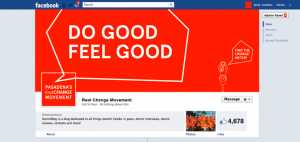 The social media campaign is a critical part of the Real Change Movement; it is one way of raising visibility and increasing awareness of the campaign. This campaign included an integrated Instagram and Facebook hashtag system, and a 1 page website.
The social media campaign is a critical part of the Real Change Movement; it is one way of raising visibility and increasing awareness of the campaign. This campaign included an integrated Instagram and Facebook hashtag system, and a 1 page website.
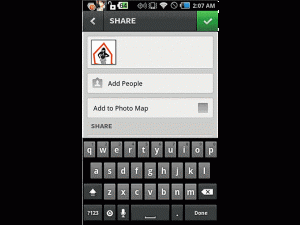 These elements were used to reinforce the Real Change Movement’s message. I.e. “This is not just a charity, it’s a movement.” Additionally, it reinforces the strategy that people are joining and becoming part of a movement.
These elements were used to reinforce the Real Change Movement’s message. I.e. “This is not just a charity, it’s a movement.” Additionally, it reinforces the strategy that people are joining and becoming part of a movement.
These are welcoming, natural and spontaneous films that have the opposite feeling to the commercial, overly dramatic, intrusive films often seen on websites. The thought behind this is to reinforce the word “real” in the Real Change Movement, and to do it by creating films that use real or natural lighting to create a mood and feeling of authenticity. These are real stories, of real people, whose real lives are being changed, all reinforcing the idea of real change for the homeless in Pasadena is possible.
There are also purely entertaining videos that are simply about engagement and fun. The student created one film showing how spare change can be used to create change. The point of the video is to encourage and remind people that spare change can be used for something. The most effective part of the video is that it shows how easy it is for people to donate.
The students were motivated by the idea that, people not only like to get things, they even like the possibility of getting things, and these videos capitalize on that by giving that possibility. With every “like”of a video or post, the viewer can possibly win a tee shirt or a tote bag.
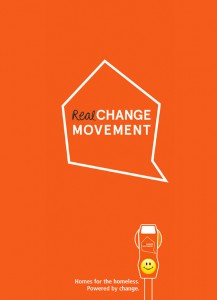
Community Partners for the "Real Change Movement" speak about the project.
The director of housing for the City of Pasadena, provides context for the Real Change Movement Project.
PSA highlighting a student solution to generate tangible, sustained public support for Pasadena’s homeless community